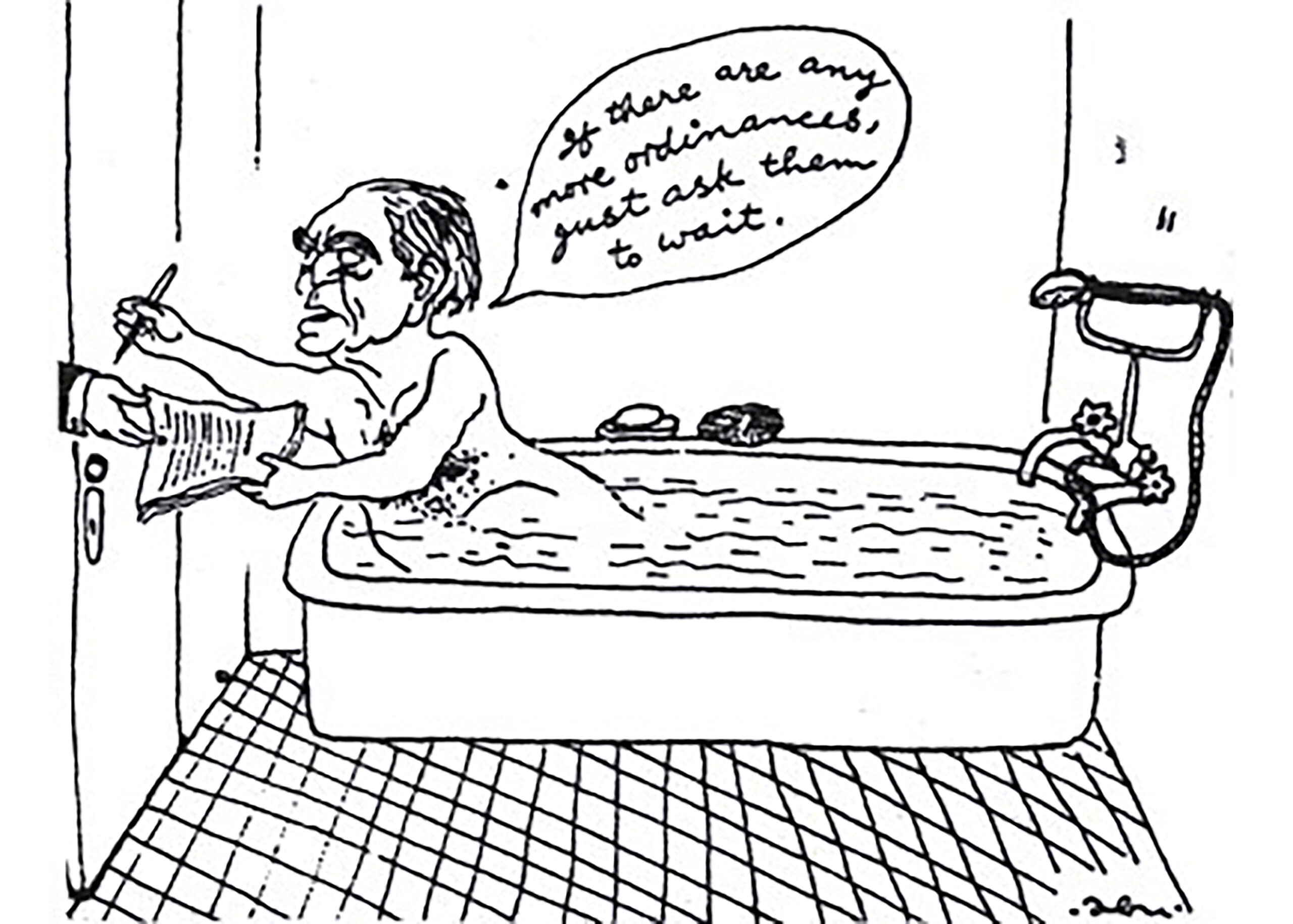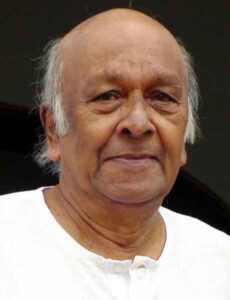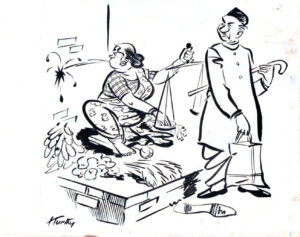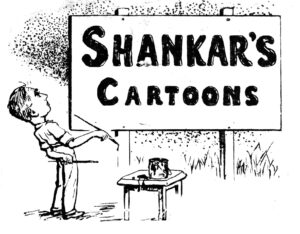Most early cartoonists of independent India had a Kiwi-turned-British icon to get inspired from: David Low.
Published Sep 16, 2024 | 9:00 AM ⚊ Updated Sep 16, 2024 | 9:00 AM

Abu Abraham famously lampooned the Emergency by showing the then president Fakhruddin Ali Ahmed in a bathtub hurriedly signing the declaration.
In the murky, shadow-boxing world of everyday politics, cartoonists stand out with their satirical twist on the mundane. While the rest of the world takes sides and splits their hair, these men and women of an edgy art form try their best to inject humour in generous doses. But look deeper, and they could double up as critical chroniclers of history. This, seriously, is beyond funny.
Showcased over two extensive exhibitions in Bengaluru recently, the works of the legendary Abu Abraham on display had a distinct historical context. It was a hundred years since the famed cartoonist was born, and the works tellingly revealed his connect with a world in turmoil. Documented through his simple but witty lines, the Emergency, the Indo-Pak wars, and the see-saw politics all came alive in dramatic visuals.
The likes of Mario Miranda, as a vivid illustrator of the culture and mores of the then Bombay and the rustic beauty of Goa, had cemented his place as a social cartoonist. Today, his trademark lines in extreme detail are all over Goa, packaged in myriad forms and merchandise. But if Mario was details personified, Abu’s lines were deliberately simplistic to divert attention to the message.
Unwavering in his commitment to his craft, Abu famously lampooned the Emergency by showing the then president Fakhruddin Ali Ahmed in a bathtub hurriedly signing the declaration.

Abu Abraham
In just one speech bubble that read, “If there are any more ordinances, just ask them to wait,” the cartoonist captured the absolute surrender of the system.
Abu’s 15-year stint in the United Kingdom and exposure to the mature cartoon ecosystem there had shaped his art with a trademark irreverence to authority. In a telling cartoon, he shows ‘Reagan’s Supermarket’ stocked with bombs of multiple shapes. Despots in military gear are seen shopping, as bargains and discounts scream out from the shelves.
But this irreverence had echoes even among cartoonists who rarely ventured out of desi shores. They had enough in store right here to mock the powers in good measure. At the height of the Congress reign during the 1980s, cartoonist BV Ramamurthy had a front-page, multi-column cartoon that illustrated NT Rama Rao’s runaway victory in Andhra Pradesh.
Recalls veteran cartoonist Nanjundaswamy YS: “When Congress swept the entire country, only NTR stood against the trend. Ramamurthy’s cartoon had a huge Congress bulldozer crushing all and sundry as NTR escapes in a cycle. Today, when I look back, that cartoon tells the entire story of those elections. Cartoons had that kind of power.”
Walking the tightrope
Decades before Ramamurthy, Abu, Mario, and Laxman emerged on the mainstream newspaper pages, K Shankar Pillai and Enver Ahmed filled that space. Those were the twilight years transcending the British era and the birth of two independent nations.

A cartoon by BV Ramamurthy.
Enver in particular had to negotiate the tough task of walking the tightrope, drawing for publications on either side of the great divide.
While Shankar’s Weekly documented those early years with satirical finesse, Enver had to be careful. In undivided India, drawing for The Dawn on the other side, he had famously caricatured Mahatma Gandhi. Post-independence, he shifted to Delhi and promptly changed tact. Freedom, for him, cut both ways.
Most early cartoonists of independent India had a Kiwi-turned-British icon to get inspired from: David Low. He had gotten his hands dirty in Australia, satirizing the then Prime Minister Billy Hughes.
As the official cartoonist for The Bulletin, Low repeatedly targeted Hughes’ eccentric personality, earning the premier’s wrath. But that hardly bothered Low, even when he was called a ‘bastard’ by the most powerful man of that country. Low’s funny bone was aptly complemented by a cartooning style that relied almost exclusively on simple brush strokes with ample white spaces.
In their initial stints as political cartoonists, Abu and even RK Laxman were greatly influenced by Low’s formidable reputation, recalls VG Narendra, the man behind the Bengaluru-based Indian Institute of Cartoonists (IIC). “David Low’s selection of ideas and presentation of themes were very simple. Caricatured figures would emerge with very few lines,” he notes.
Eventually, however, most Indian cartooning greats emerged out of his shadow. Laxman discovered his style, firmly establishing himself as a political and social cartoonist of repute. Wielding his pen and strokes for over half a century, Laxman mocked, satirized, and critiqued Indian politics and society, as his ‘Common Man’ entrenched himself on the front pages of The Times of India.

Shankar’s Weekly documented the early years of India with satirical finesse.
But this flow demanded a free spirit, an ecosystem that was not threatening in its reception. Barring the Emergency years, Laxman enjoyed that comfort. He stretched the limit, though, with his unsparing caricaturing of Nehru, Indira Gandhi, and Rajiv Gandhi. In later year cartoonists would envy that relative freedom, as many had to endure disapproving frowns.
Abu pushed the boundary. As his daughter Ayisha Abraham recounts, he once stood up at a press conference called by the Information Minister asking why they had put a stop to humour.
“Some of his works were blocked but many went through. In many cases, the censors didn’t quite get the puns. But that period was a relatively short time in his long career,” she points out.
The recent Abu show at IIC’s Indian Cartoon Gallery had a few of his censored works on display. The official seals boldly imprinted on them told a story from a different era. Such gems are why many students of history today make a beeline to the IIC to understand the politics of those times, the visual documentation crafted with immense depth, creativity, and sharp insights of the cartoonists of yore.
At the height of his cartooning career, Abu would read all the newspapers of the day, cover to cover, to source ideas for his work.
“He would finish that process by 10 in the morning to meet the daily 1 pm deadline. To keep himself abreast, he would attend meetings, travel, sketch, and take notes. He was working all the time, observing and gathering,” recalls Ayisha, painting the picture of a cartoonist father, who was equally at ease as a sharp, informed political commentator.
(Independent multi-media journalist Rasheed Kappan has over the last three decades authored hundreds of deep-dive features on urban mobility, environment, sustainability, aviation, art, culture, and the interface between policy, planning, and activation on the ground. Views are personal. Edited by Majnu Babu).
